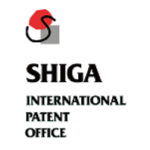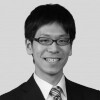The applicant can make arguments from several viewpoints against a lack of inventive step indicated in an office action. However, whether such arguments can persuade an examiner is assessed on a case-by-case basis. This article explores statistical analysis on the effectiveness of arguments for inventive step in the Japan Patent Office (JPO) examination.
Five categories of arguments for inventive step in Japan
In this article, arguments without amendments for inventive step in Japan are categorised into five groups as follows.
1) Fact finding
Arguing that an examiner’s interpretation of the present invention, the cited invention(s), and/or the combined invention of the cited inventions is incorrect
2) Matter of design
Arguing that a feature of the present invention which is not disclosed in the citation(s) is not a matter of design which a skilled person could have made appropriately
3) Motivation
Arguing that there is no motivation to combine the primary citation and the sub citation(s) to arrive at the present invention
4) Obstructive factor
Arguing that there is an obstructive factor against combining the primary citation and the sub citation(s)
5) Effect
Arguing that the present invention results in an unexpected and advantageous effect over the cited inventions
If the applicant can persuade the examiner to accept any one of these arguments, the rejection of inventive step is overturned.
In this article, it is assumed that arguments (3) and (4) can be made only if the examiner cites a primary citation and a sub citation(s).
If the examiner indicates a lack of inventive step with reference to only one citation (a primary citation), it means that the examiner considers that the difference between the present invention and the primary citation is merely a matter of design which a skilled person could have made appropriately. In such a case, the applicant can make arguments (1), (2), and (5).
If the examiner cites two or more citations (a primary citation and a sub citation(s)), and indicates that all the features of the present invention are disclosed in the citations, the applicant can make arguments (1) and (3) to (5).
If the examiner cites two or more citations and although there is still a remaining feature of the present invention which is not disclosed in any citations, the examiner considers that the remaining feature is merely a matter of design. In such a case, the applicant can make arguments (1) to (5).
Figure 1: The numbers of cases for which the applicant made only one category of argument and the allowance rate
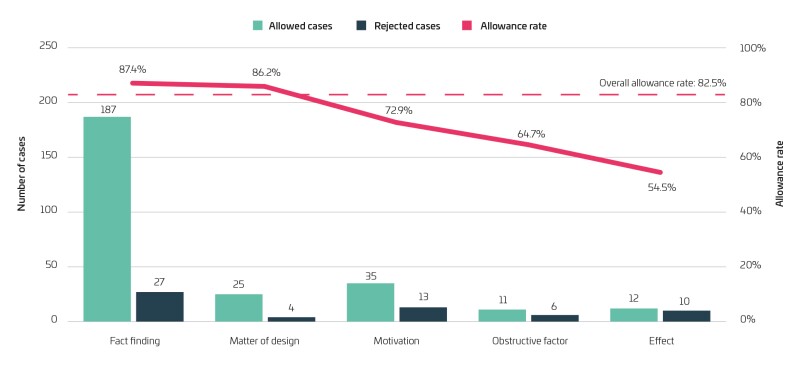
Analysis on effectiveness of arguments
The subject of this analysis is 716 Japanese patent applications, which satisfy the following conditions (a) to (f):
a) A request for substantive examination was filed from January to June in 2018
b) No amendments were filed until an examination decision was issued
c) The examiner indicated only a lack of inventive step in the first office action
d) The applicant filed only remarks without amendments in response to the first office action
e) A decision of allowance or rejection was issued after the response to the first office action without issuance of a second office action
f) It is not a divisional application or an application originating from a utility model application
Although the applicant can make two or more of arguments (1) to (5), a decision of allowance does not include a specific explanation regarding allowance. Therefore, it is difficult to determine which argument was effective for persuading the examiner.
Accordingly, the cases for which the applicant made only one category of argument are first extracted. Fig. 1 shows the numbers of the allowed cases and the rejected cases for which the applicant made only one category of argument and the allowance rate for each argument category.
Figure 2: Arguing rate for allowed cases and rejected cases in each argument category
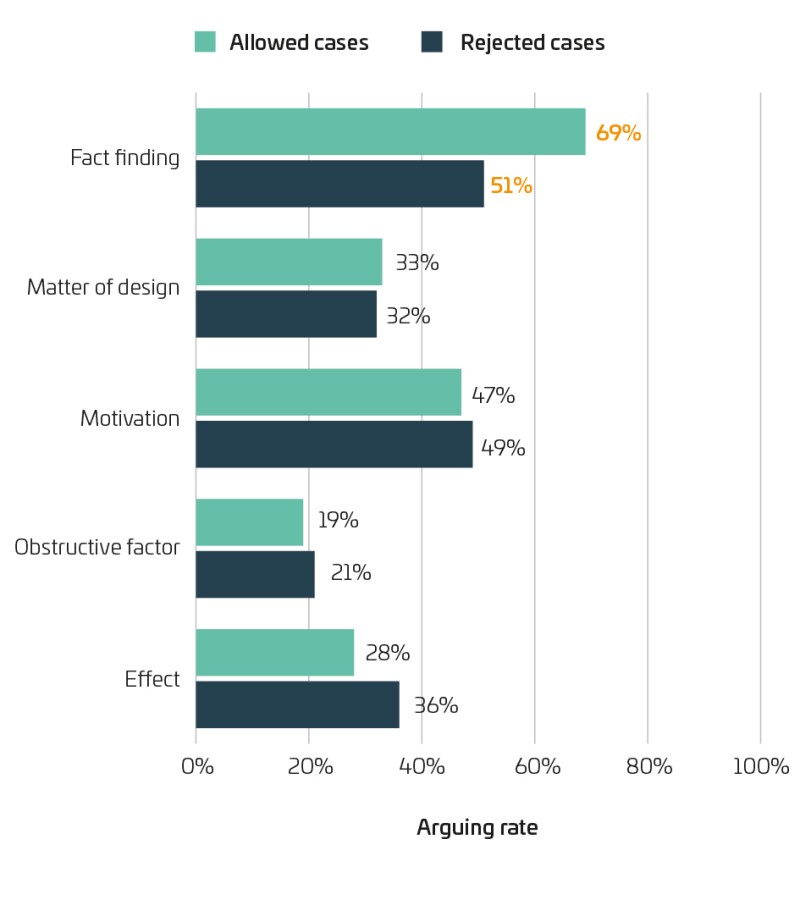
The allowance rates for categories (1) and (2) are greater than the overall allowance rate of 716 cases, which was 82.5%. Meanwhile, the allowance rates for categories (3) to (5) are less than the overall allowance rate. Accordingly, it is speculated that argument categories (1) and (2) are effective for persuading the examiner to some extent.
However, the numbers of cases for categories (2) to (5) are too small to extract a more specific trend. Thus, a statistical analysis on the 716 cases is carried out.
Here, an ‘arguing ratio’ has been calculated for each argument category. Specifically, for each argument category, (i) in how many cases the applicant made the category of argument among all the allowed cases (arguing rate for the allowed cases); and (ii) in how many cases the applicant made the category of argument among all the rejected cases (arguing rate for the rejected cases) are calculated. Fig. 2 shows the arguing rate for the allowed cases (upper, light green bar) and the arguing rate for the rejected cases (lower, dark green bar) for each of argument categories (1) to (5).
For category (1), the applicant made arguments against fact finding in 69% of the allowed cases and 51% of the rejected cases. According to Pearson’s chi-square test with a significance level of 5%, a statistically significant correlation can be found between whether the applicant made arguments against fact finding and whether the application was allowed.
Meanwhile, no significant correlation can be found between the arguments in the remarks and the examination results for the other categories of arguments.
Fig. 3 shows the breakdown of arguments against fact finding into four subgroups. The ‘present invention’ means the applicant’s argument that the examiner incorrectly interprets the claimed invention of the present application. The ‘primary citation’ means the argument that the examiner incorrectly interprets the primary citation. The ‘sub citation(s)’ means the argument that the examiner incorrectly interprets the sub citation(s). The ‘combined invention’ means the argument that the examiner’s judgment that the constitution of the present invention is obtained by combining the cited inventions is incorrect.
Figure 3: Breakdown of arguments against fact finding
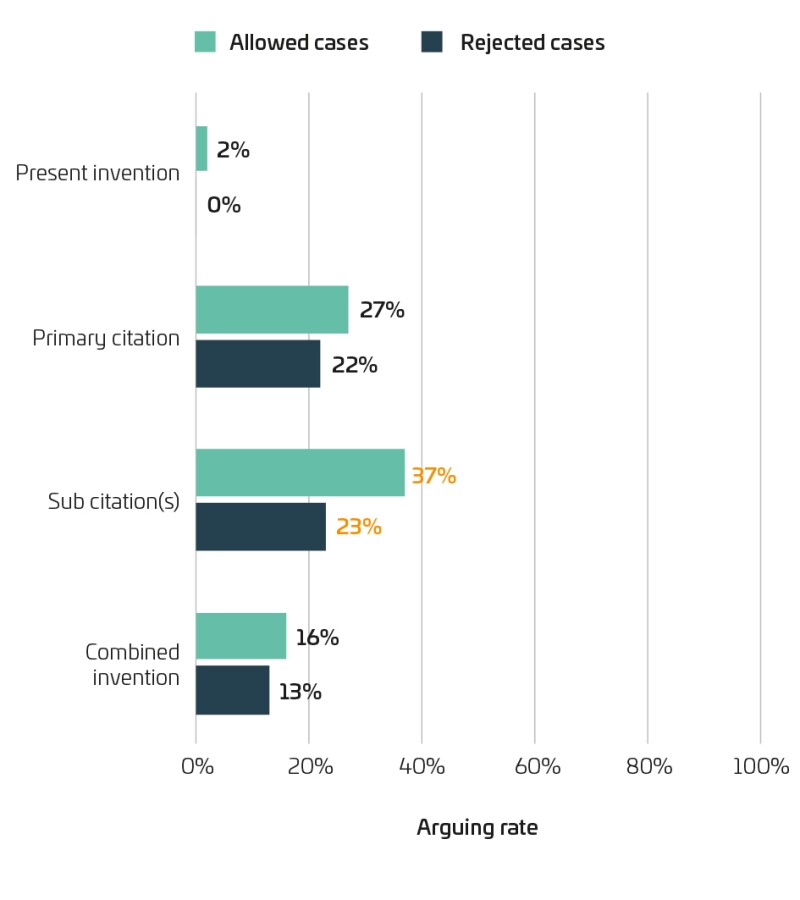
Among them, a significant correlation can be found between the applicant’s arguments of ‘sub citation(s)’ and the examination results. In other words, if the applicant argues that the examiner’s interpretation of the sub citation(s) is wrong, the application is more likely to be allowed.
In the allowed cases in which the applicant made arguments on the fact finding of the sub citation, many applicants argued that the examiner inappropriately interprets the sub citation, in particular that the examiner inappropriately generalises the disclosure of the sub citation.
In general, the examiner sometimes refers to only a small portion of a sub citation to complement the difference between the present invention and the primary citation. In such a case, the interpretation of the sub citation is likely to be less strict than that of the primary citation. Accordingly, the applicant should check whether the technical matter extracted from the sub citation can complement the difference between the present invention and the primary citation for sure, and whether the examiner correctly interprets the description of the sub citation in light of the entire disclosure including the problem or mechanism of the invention. The applicant should suspect that the examiner might conveniently generalise the invention of the sub citation.
Statistically speaking, checking the examiner’s indications about the sub citation is the most important procedure for making arguments for inventive step without amendments.
Differences depending on technical fields
Effectiveness of arguments for each technical field, which is divided in accordance with the examination section of the JPO, has also been analysed. 127 electrical/IT cases, 279 mechanical cases, and 181 chemical/biotech cases have been statistically analysed.
Fact finding
For all of the three technical fields, the arguing rate of fact finding in the allowed cases is higher than that of the rejected cases as shown in Fig. 4.
Figure 4: Arguing rate of arguments against fact finding for each technical field
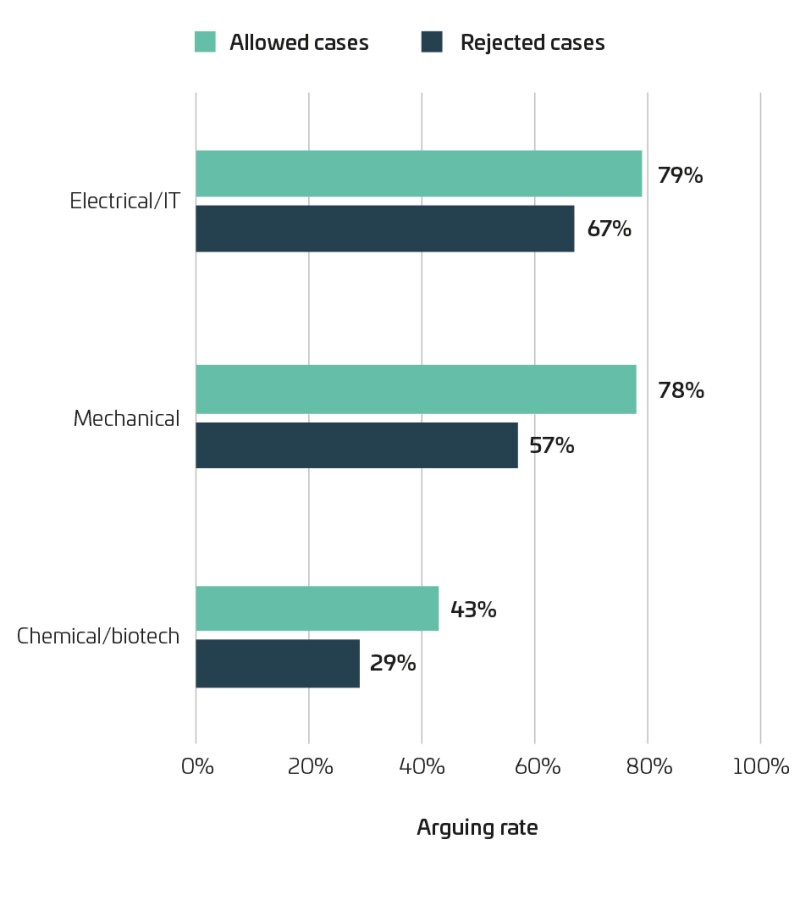
In particular, for the electrical/IT field and the mechanical field, a significant positive correlation has been found between the applicant’s arguments on interpretation of a sub citation(s) and the examination results. In other words, the rejection of inventive step is likely to be overturned in the electrical/IT and mechanical fields if the applicant logically points out the examiner’s incorrect interpretation of a sub citation(s).
On the other hand, for the chemical/biotech field, the arguing rate in both the allowed cases and the rejected cases is much lower than that of the electrical/IT and mechanical fields. This may suggest that the examiner is less likely to misunderstand the inventions because the chemical/biotech inventions are likely to be specified more clearly, e.g. by the name or chemical structure of compounds, than the electrical or mechanical inventions.
Matter of design
As to arguments on matter of design, it is noteworthy that the arguing rate in the allowed cases are greater than that of the rejected cases in the electrical/IT field as shown in Fig. 5.
Figure 5: Arguing rate of arguments on matter of design for each technical field
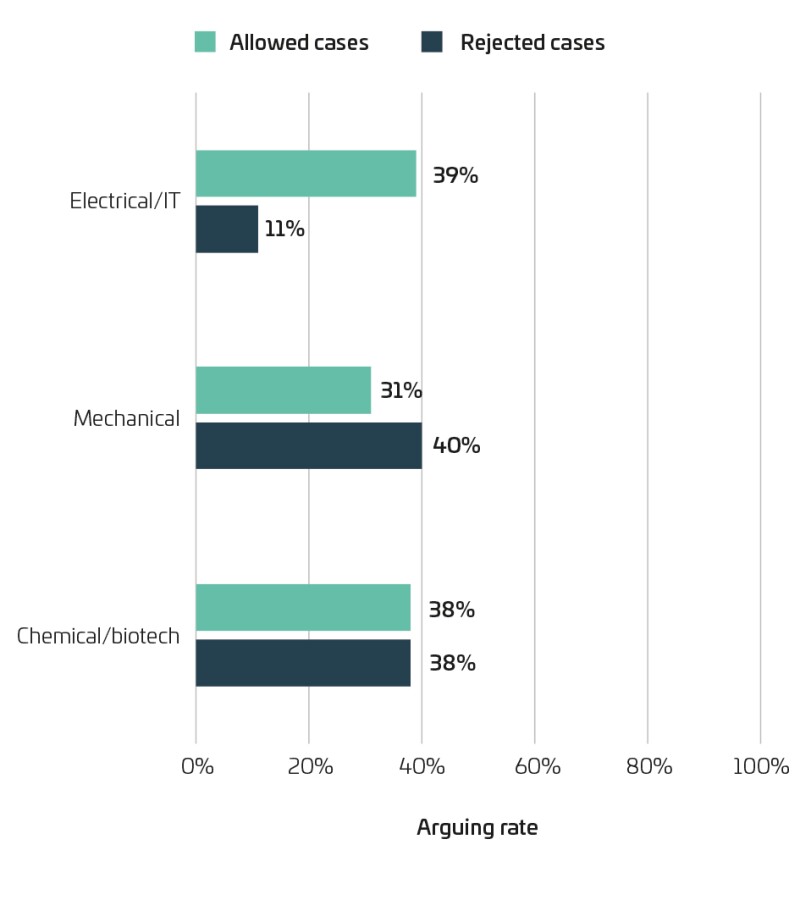
In particular, in many cases, the examiner’s indication that the difference between the present invention and the cited invention is merely a matter of design was overturned by the applicant’s argument that the difference has a remarkable technical significance.
Therefore, in the electrical/IT field, if the examiner indicates a lack of inventive step with the logic of a ‘matter of design’ for the difference, the applicant should consider explaining in detail the technical significance of the difference, such as novelty of a problem of the present invention or remarkability of a technical effect.
Motivation
The tendency of the arguing rate of motivation has been found to depend on the technical field. As shown in Fig. 6, it seems that arguments on motivation are much more effective in the chemical/biotech field than in the electrical/IT field.
Figure 6: Arguing rate of arguments on motivation for each technical field
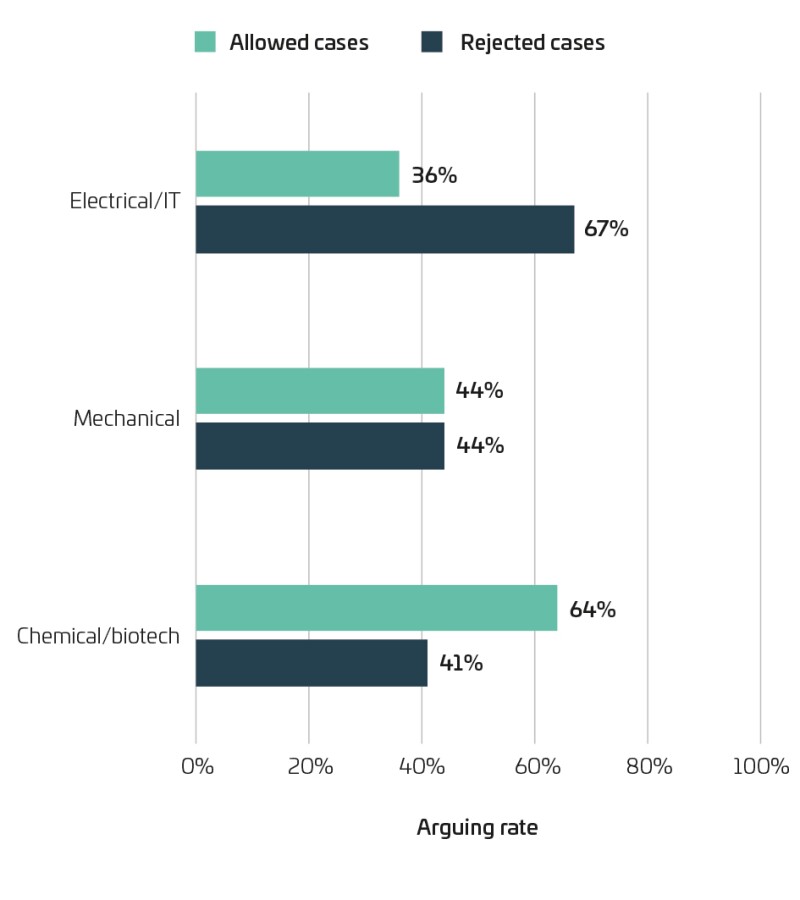
In Japan, generally speaking, a ‘motivation’ to combine a primary citation with a sub citation(s) is required for the examiner to deny inventive step. A motivation is, for example, the similarity of technical field, problem, and function between the primary citation and the sub citation(s) or between the present invention and the cited invention(s), or teaching in the citation(s).
In the electrical/IT field, the JPO examiner is likely to consider that there is a motivation for a skilled person to combine a known configuration A and a known configuration B to obtain the combined configuration A+B unless there is a specific obstructive factor. Accordingly, the applicant’s arguments on a motivation are less effective in the electrical/IT field than the other technical fields.
On the other hand, it seems that arguments on a motivation are effective in the chemical/biotech field, in which an unpredictable and experimentally-confirmed effect is often considered in judgment of inventive step. Since such an unpredictable effect can be linked to a ‘novel’ problem, the applicant can argue that the citations fail to disclose the novel problem of the present invention and thus there is no motivation for a skilled person to conceive of the present invention from the cited invention(s).
Obstructive factor
The effectiveness of arguments on an obstructive factor depends on the technical field as well. As shown in Fig. 7, the arguing rate in the allowed cases is greater than that of the rejected cases only in the chemical/biotech field.
Figure 7: Arguing rate of arguments on obstructive factor for each technical field
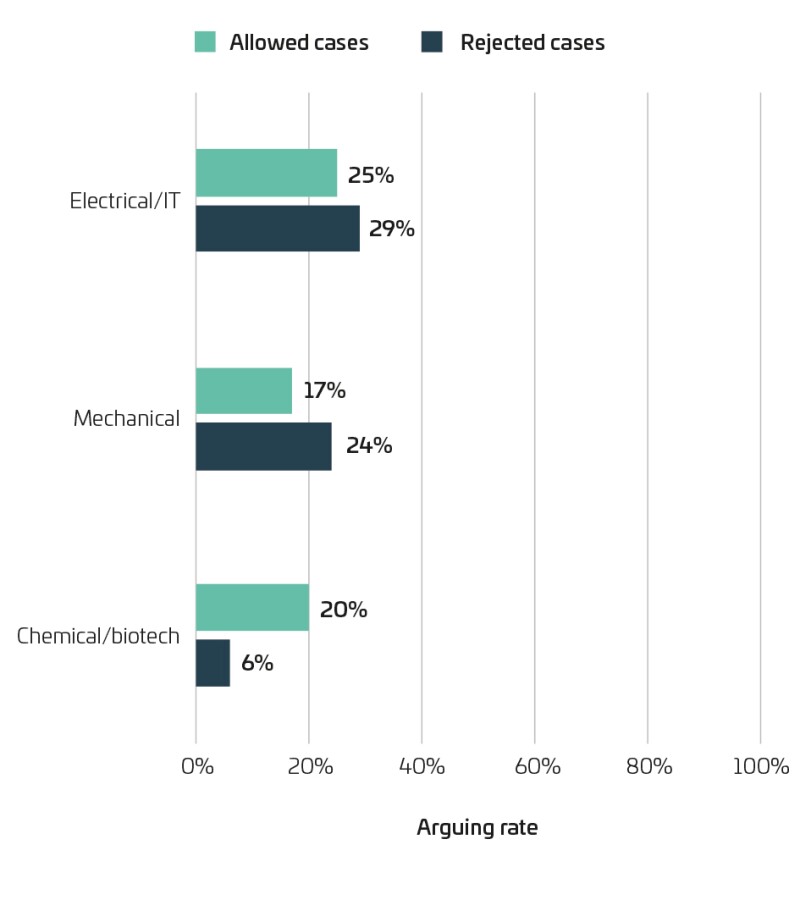
An obstructive factor is likely to be argued in relation to the problem of the invention. For example, one of the typical arguments on an obstructive factor is that if the configuration of the sub citation(s) is applied to that of the primary citation, the problem of the primary citation cannot be solved and thus a skilled person could not have easily applied the sub citation(s) to the primary citation. Since the examiner is likely to consider the problem in the chemical/biotech fields as discussed above, arguments on an obstructive factor may be more effective in the chemical/biotech field than the other fields.
Effect
As shown in Fig. 8, effectiveness of arguments on a technical effect of the present invention has not been found in any technical fields.
Figure 8: Arguing rate of arguments on effect for each technical field
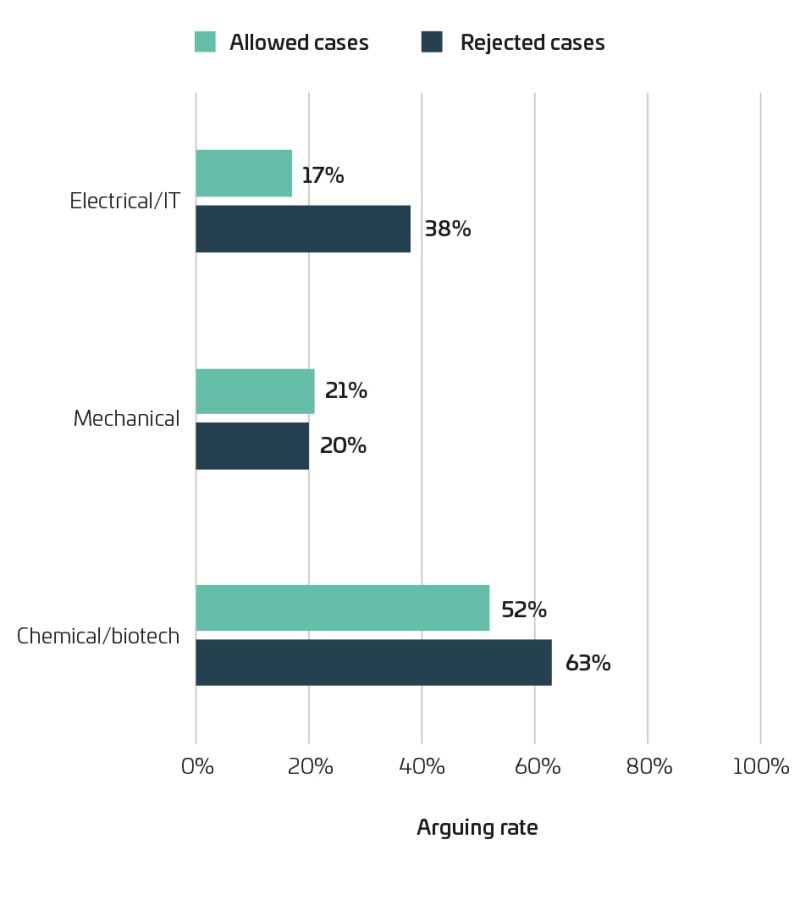
It is thought that the examiner considers technical effect in drafting a first office action, and thus the applicant’s arguments on the effect are less effective than the other arguments.
Summary
Arguments for inventive step in Japan have been categorised into five groups, (1) fact finding, (2) matter of design, (3) motivation, (4) obstructive factor, and (5) effect, and the effectiveness thereof has been statistically analysed.
Without amendments, it seems that the most effective argument is pointing out the examiner’s wrong interpretation, in particular interpretation of the sub citation(s). Moreover, the technical field dependency of each argument has also been found.
More detailed analysis is presented in Japanese as “Effectiveness of arguments for inventive step in JPO examination”, Patent, the JPAA, Vol. 74, No. 7 (2021): 74-84.
Click here to read all the chapters from Asia-Pacific IP Focus 2021
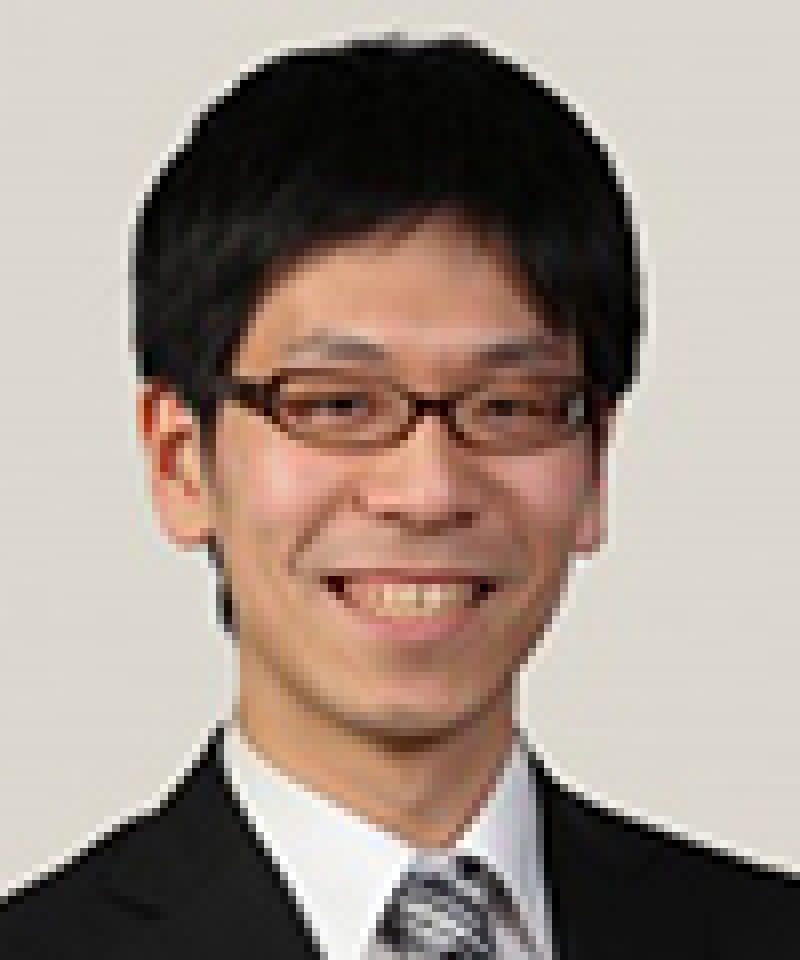
Kenji Tanaka
Patent attorney
Shiga International Patent Office
T: +81 3 5288 5811
E: tanaka.kenji@shigapatent.com
Kenji Tanaka is a patent attorney at Shiga International Patent Office. His practice focuses on mechanical and civil engineering, and chemistry.
Kenji specialises in secondary batteries, semiconductor devices, display devices, medical equipment, and inorganic materials. He has conducted research on metal oxides such as reduced titanium oxide and nanoparticles thereof, for example, an experimental and computational discussion on electron state and spin state with first-principles calculation.
Kenji is a graduate of the University of Tokyo, and regularly writes on related IP topics in publications.
